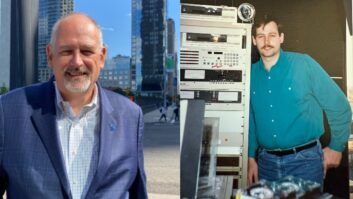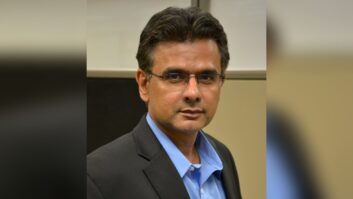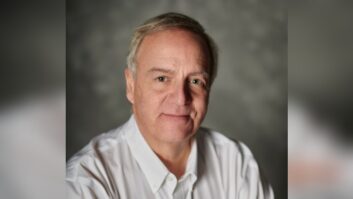Technical Sessions at NAB Radio Show Explore the Ramifications of Digital
Technical workshops at this month’s NAB Radio Show in Philadelphia reflect the digital transformation sweeping over some stations and being pondered by others.
On the engineering end, it’s not just about flipping a switch to bring the familiar analog AM/FM medium into the digital domain. Getting the sound and signal right requires rethinking.
D vs. A
Remember how CDs sounded different from LPs when they arrived in the mid-1980s? Pro audio professionals had to recalibrate to recapture the classic “sound” with new technology.
The Thursday afternoon session “Processing Audio for AM, FM and Digital Radio” aims to help radio engineers up and over a similar learning curve. Andy Laird, vice president and chief technology officer of Journal Broadcast Group, will cover basics, and Frank Foti, president of Omnia Audio, will expand on them.
“There is no ‘standard’ for audio processing other than not to over-modulate,” said Laird. “Understanding the elements available and how they interact is the basic foundation for building a signature sound. It’s like mixing paint. You need to know what colors to mix to get the right shade you desire.”
Laird’s presentation will stack audio examples created by different types of equipment or elements within a system to demonstrate how they can help or hurt each other while creating a “sound.”
Foti said he will explore differences between the new “medium” and familiar analog audio. For instance, bandwidth can be as wide as 20 kHz, and there is no preemphasis in the transmission chain. According to Foti, this allows the presence and high-frequency spectrum to sound open and clean.
Also, engineers have new qualities to contend with, just as “wow and flutter” concerns of turntables once gave way to the “jitter” of CDs. Now, instead of clipping, audio engineers work with look-ahead limiting that brings its own distinct sound. Also, harmonic distortion is traded for intermodulation distortion or IMD, which can be controlled by applying various techniques.
For Foti, getting in-depth with the new dynamics of digital audio processing for radio is essential; but there is no cure-all. Each format, whether classical or heavy metal, requires individual attention to what is as much an art as a science, he says.
“With HD Radio stations lighting up every day, we’re still on the front end of the learning curve. Audio processing will play a vital part in the successful deployment of HD Radio.”
Tomorrow today
The transition isn’t just about emulating existing services.
The Friday morning workshop “Data Technologies and Applications for Digital Radio” is led by Mike Starling, NPR’s vice president of engineering, and Joe D’Angelo, iBiquity Digital’s vice president of advanced services. It will lay out parameters of what’s possible with bandwidth that’s becoming available for broadcasters to innovate applications, services and business models.
One of the highlights of Starling’s 16-year career at NPR, he said, was the pioneering “Tomorrow Radio Project” field test on supplemental audio channel broadcasting, conducted in 2003. Multicasting on SACs is just the beginning of the new services possible as digital radio offers a convergence of the traditional audio delivery service and interactive media, he believes.
“Extended hybrid bits are going to be invaluable components of the service activities of radio stations in the future,” he said. “It won’t happen overnight; but datacasting applications, conditional access – i.e., subscription services – integrated timeshift technology (TiVo style radio) and ultimately return channel services will increasingly become important activities for radio stations.
“We may logically evolve from the core station operations into ‘radioplexes’ that offer multiple services as revenue generators to maintain and strengthen the free over-the-air local broadcast service.”
IBiquity’s D’Angelo sees a broad horizon and, with Starling, plans the workshop as an opportunity to brainstorm.
“The exciting thing here is that the infrastructure has advanced in front of the clear business opportunities. We’ll look to the future by extending existing business models and be open for the unexpected and as yet unimagined,” said D’Angelo.
The intrusion of the Internet, podcasting and satellite puts radio professionals in a situation where maintaining status quo isn’t savvy, he said. Moving forward offers a chance not just to protect what’s left of radio’s traditional turf but also to beat new competitors at their own games. The workshop will map out examples of innovation in Europe and elsewhere.
“Satellite radio is beginning to leverage localism, which is a serious threat,” he said. “But we can leapfrog past them with the enormous bandwidth digital radio brings. In the New York metro area alone, radio has 8 megabits of bandwidth that can form the foundation of the emerging digital economy.”
To the max
Another major shift in the migration to digital is covered in “Measuring Broadcast Signals,” led by David Maxson, managing partner of Broadcast Signal Lab, on Friday morning. Aside from ensuring FCC compliance, how can engineers be sure that they’ve maximized their digital signal?
Maxson points to a key difference between digital and analog signals that requires engineers to rethink spectrum analyzer techniques.
“The power spectral density of AM and FM signals is focused in the center of the channel, which makes it relatively easy to prevent out-of-band emissions and to measure them,” he said. “Digital signals, however, have greater power spectral density across their bandwidth. Their energy is spread evenly out to the band edges.”
The upshot is that digital calls for new techniques and greater attention to measurement. IBOC adds another level of complexity as a hybrid of digital and analog.
Other technical events at the NAB Radio Show this year include a two-part workshop on “AM Directional Antennas in a Digital World” presented by Benjamin Dawson, president of Hatfield and Dawson, and Ron Rackley, partner in du Treil, Lundin and Rackley.
NRSC meetings and SBC certification exams are also scheduled.
For information see www.nab.org







